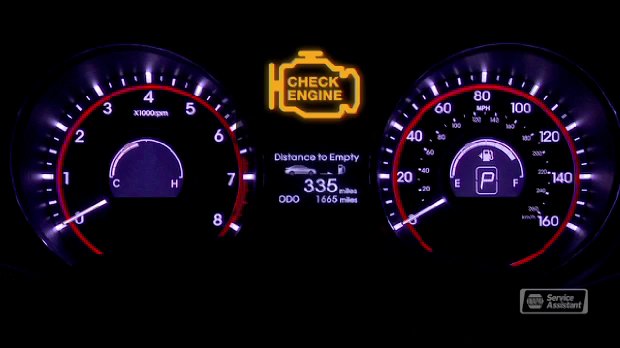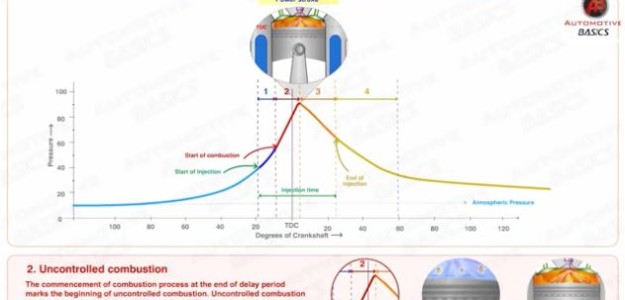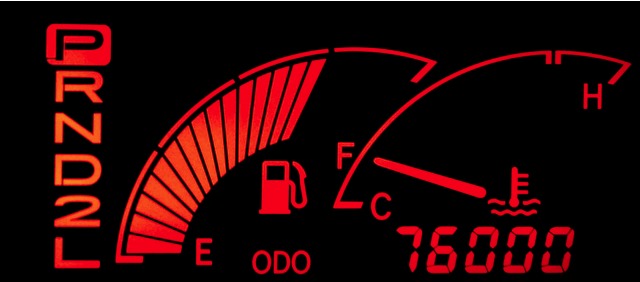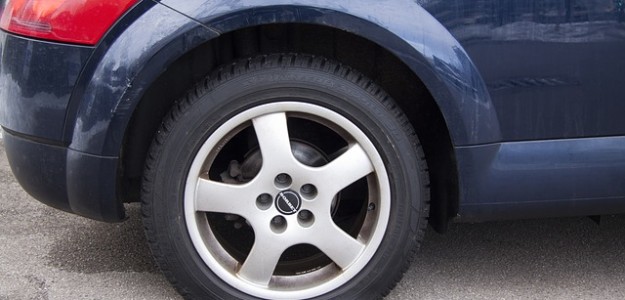Posted on 4/20/2017

So, the government was shut down for sixteen days. Did that keep shoppers away from the car lots? Apparently not! According to Michigan Live, car companies, including the Big Three, reported a combined sales of 1.2 million vehicles in October. Doesn't sound much like a slump does it? In fact, it was an eleven percent increase over last year's figures. According to Jessica Caldwell, a senior analyst at Edmunds.com, "This was a really interesting month. Probably one that hasn’t seen such volatility in quite some time. It definitely had a lull when the government shutdown went longer than people anticipated." Caldwell elaborated with the fact that October sales picked up as soon as the Shut Down was over. Each of the Detroit car makers reported double-digit gains in October. Many automakers and experts have actually upped their yearly sales estimates from the low- to ... read more
Posted on 4/20/2017
From Exhaust Gas Recirculation (EGR) Valves to O2 Sensors, your exhaust system has a critically important job to do to keep your car operating efficiently. Your vehicles exhaust system is engineered to withstand extreme conditions, including high exhaust temperatures, corrosive gasses, road salt (where applicable) and water. The vehicle's exhaust system performs three important functions. It directs exhaust gases from the engine to the rear of the vehicle, it treats the exhaust gases to reduce emissions and it reduces noise produced by the engine's combustion process. Key components of the exhaust system include: Exhaust Manifolds Gaskets Exhaust Pipes Catalytic Converters Resonators Mufflers Tail Pipes Flex Joints Heat Shields Exhaust Hangers Malfunctions can be caused by environmental damage, or even problems with the ignition or fuel systems. Catalytic converters can be damaged if the check engine light is flashing and the vehicle continues to be driven. The exhaus ... read more
Posted on 4/20/2017

When my check engine light comes on, I'm torn between utter panic and just wanting to ignore it and hope it goes away. How about you? How does it make you feel just thinking about it? It's understandable of course, because that same check engine light could be coming on for anything, from serious damage to your transmission all the way down to just a loose gas cap. "A loose gas cap?" you say. "There's a trouble code for that, seriously?" That's a really good question. There's a very common misconception that the trouble codes stored in your engine computer when your check engine light comes on will specifically identify a problem. It's really more like pointing to the symptoms of a problem. Take your temperature, for instance. Say it's 101 degrees. Your heat sensor, the thermometer, tells you your temperature is out of the norm ... read more
Posted on 4/20/2017

Welcome to Part 2 in this educational series on the functioning of the diesel engine! Today in Part 2 we're going to cover the Stages Of Combustion. If you missed Part 1 simply check last week's posting
Posted on 4/20/2017

You have no doubt noticed the level of technology built into the modern automobile. Who could have guessed what we have today just 50 years ago? Where will we be in another 50 years? What about just 10, or even 5 years? Check out the video below to see the automotive vision of Texas Instruments in our near future. About This Video And Its Authors TI, a leading supplier in automotive technology, offers innovations for cars of today and tomorrow. TI's vision of near-term and longer-term automotive technology is featured in this video. TI's automotive technologies give customers the ability to introduce many highly sophisticated features into today's automobiles including infotainment systems that keep drivers informed and passengers entertained, safety features that assist with parking and detect driver drowsiness and innovative communications technology. TI's automotive technologies transform cars into portable command centers for entertainment and information, with instan ... read more
Posted on 4/20/2017
There's nothing like the let down of noticing the first dent on your new car. As one person put it, "it's not much fun to wax a dent". Getting it fixed is certainly an option, but maybe a pricey one. Or is it? Perhaps you've seen paint-less dent removal advertised or even offered in a local, exterior mall kiosk. Have you ever wondered how it works, and even if it works? I've wondered myself. My experiences of popping out a dent in many materials is that there's always some kind or remnant of the damage left behind. Not to mention we're usually talking metal here (sometimes plastic of some variety). Well, wonder no more how this is accomplished, all without removing any body parts from your car. Here's a beginners guide demonstrating the type of techniques and equipment used! And here are a few more examples
Posted on 4/20/2017

Water pumps. We don't think about them often, but they're a really important part of our vehicles. Let's take a step back. You see, the engine is cooled by a coolant, anti-freeze, mixed with water. This mixture circulates around your engine, absorbing some of the heat. The coolant then flows through the radiator, where air cools it down for the return trip back through the engine. The water pump is what drives this process. Cooling system problems are the number one mechanical failure. So, the water pump plays a pretty important role. You can't get very far without a water pump! Do water pumps just wear out? If so, what causes them to fail? After all those miles and years of pumping coolant, they simply wear out. You might notice a whining or grinding sound coming from the water pump, or maybe you'll see coolant leaking from the pump itself. Where's the water pump located? The exact location varies, depending on the vehicle. Some have the water pump attached to ... read more
Posted on 4/20/2017

When it comes to saving money on your car, there are a lot of little tips and tricks some people don't know about. These things take very little effort or time, but they can end up saving you hundreds of dollars a year in car maintenance and gas costs. Here are six ways of saving money on your car that you might not have thought about before. Don't buy gas at the first station you see if you can avoid it. Shop around for gas. Sometimes one station will be consistently a little bit cheaper, and that savings can add up. Also, stations right off a major highway are often more expensive, so try to avoid them. You can also download apps for your smart phone that will help you find cheaper gas. You should also shop around for parts, tires, etc. It's estimated that the average driver will spend upwards of $3,300 a year on their vehicle! Even if your car is brand new or is in great shape, you'll still have to pay for routine maintenance such as ... read more
Posted on 4/20/2017

For more than a century people have been using cars, trucks and other personal vehicles to transport themselves, other people and goods from one location to another. In fact, the motorized vehicle went from being a luxury to a necessity in many parts of the world where public transportation and other options are limited. As a result of this dependence, it's vital the automobiles on the road are kept in good repair. The work needed to do so has changed a great deal since the first cars hit the road, and is likely to continue evolving along with the rest of the industry. A few decades ago, there were many people who could perform simple repairs on their own vehicles. On top of that, "backyard mechanics" were common. These men could take care of the more complicated auto repair matters, including the engine and other complex issues. Of course, the majority of people would take their cars and trucks to a mechanic shop with licensed mechanics. Dealership shops were a great place f ... read more
Posted on 4/20/2017

A flat tire is one of the best ways to ruin your day. Not only do you have to jack up the car, take the flat tire off, and put the spare on (or call a service like AAA), you have to suffer the inconvenience of having the puncture repaired. But how does a tire repair work, is it effective and when is a tire considered to be irreparable? 1. Tire Repair There are basically three approaches to repairing a tire: - Plugs are used to repair holes in the tread of the tire, normally in the size and shape of the puncture. This should seal leaks from the outside of the tire but may be ineffective at sealing the inside or inner lining of the tire. This is the preferred method as it is quick, easy and inexpensive. - Seals are used on the inside of the tire. This means the tire needs to be dismounted, which is a time consuming task. However, seals are often more effective than plugs. On the other hand, they do not repair the tread or outside of the ti ... read more